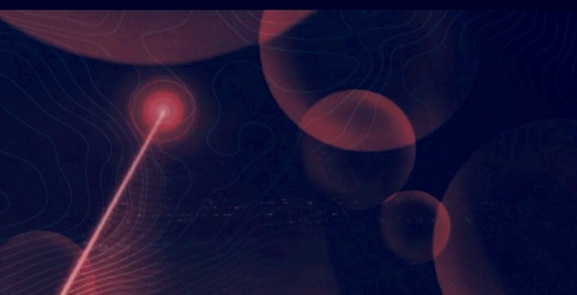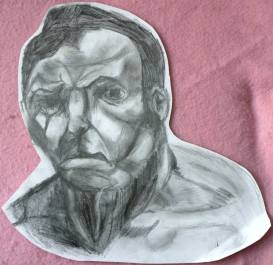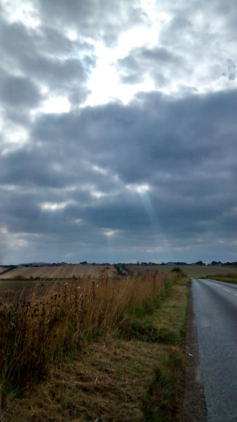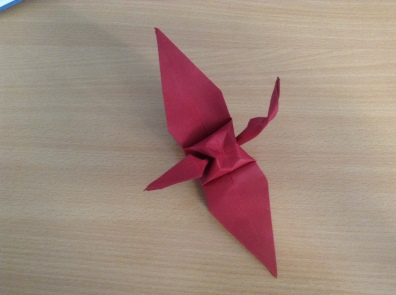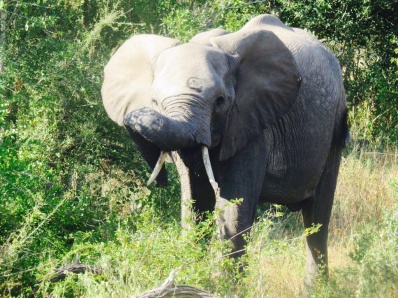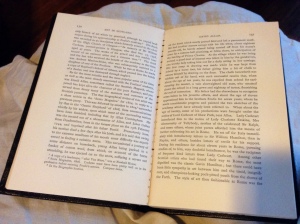Image source: In opening credits of the film, “The Marksmen”, by Marcus Adams, Director.
Anthropology: Art and Perception Journal/Blog project
This Journal/Blog presents: A chronology of thoughts and images as I settle into class and learn the processes of knowledge in the academic milieu. I start with an image of space and time and that of ‘the new learner’. These images feel like a ‘good fit’ to begin the project. Below are artistic and photographic representations that I’ve created of the idea – of the ‘Anthropos’, i.e. the intellectual/thinking man (the ‘academic’) or the ‘working man’. Next, an image of ‘the beauty’ of the building (the edifice of learning) …and outside, the wonder of the Scottish pastoral landscape near the town of Strathkinness.
You’ll find below examples of experience and daily thought and reflections on class and/or assigned readings. Hopefully you will enjoy it as the stream of consciousness it was intended to be. I have divided it into the reading weeks as laid out in the syllabus.
Week 1 Growing Art, making Anthropology

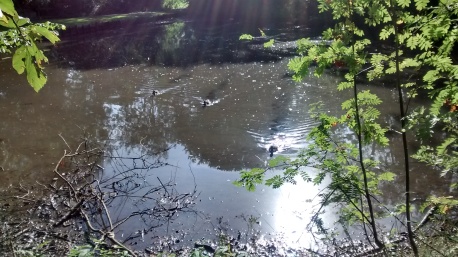
These readings opened the door to me, the inquirer (researcher and observer), to develop skills, and ‘grow an understanding’ of the role of perception in visual and material culture. This lecture was helpful as a broad overview of the concept of human perception and creativity, art and anthropology, growing and making. I took these two photographs of ‘nature’ for this e-scrapbook. It offers an opportunity to take pause and think about life in general. Michael Jackson’s Things as they are: New Directions in Phenomenological Anthropology (1996) emphasizes the link between the empirical and the experiential. It is a collection of ethnographers underlining the importance of the roots of ideas for anthropology.
In David Nash’s A Natural Environment (2013) – Tim Ingold’s The Metamorphosis of Trees (2013) looks at humanity’s relationship with nature.


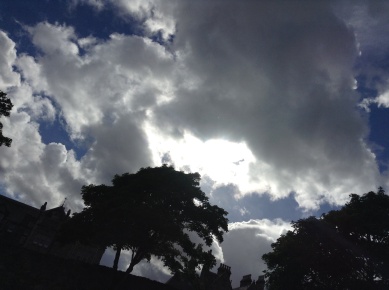 Location of the pic: Cathedral on the water, green space area, St Andrews.
Location of the pic: Cathedral on the water, green space area, St Andrews.
The Senses Considered as Perceptual Systems (1966) by J. Gibson studies the basic sensory processors and says that different senses are not only producers of seeing, smelling and hearing and tactile receptivity but in fact active seeking mechanisms for looking, listening, touching and feeling. I applied this concept with this observation (see above picture). He is an ecological psychologist and is known for his notion of affordances and the creative act. Also, this lecture explained that sensing is active.
I was next to the Cathedral ruin, where I made an observation of light and changing weather pattern in the sky. I ‘took in’ the trees and ‘things as they are’. I sat on the grass, positing the Universe? I pondered, “Am I looking ‘at’ the sky (like Gibson) or ‘with’ the sky (like Merleau-Ponty?)” – this was a concept I explored today whilst looking up at the sky.

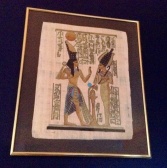
The Thinking Hand – Existential and Embodied Wisdom in Architecture (2009) by Juhani Pallasmaa, contributes to architectural theory by exploring the wonder of the gift capability of the human hand and the idea of ‘the being of the hand’. It seeks to illustrate how the pencil in the hand of the architect and artist can be seen as the bridge between the human mind imagining ‘something’ and the hand being able to make that image, emerge.
The lecture discussed: ‘Where do we place culture in the nexus of human environmental relations?’. We looked at art ‘representing’ human-ness.
Knowing from the Inside LAB with PhD students
Week 2 Sensuous Anthropology
This lecture looked at the ways meaning and knowledge are communicated through the sensory experience.
 The image below incorporates the concepts of the pleasure of sight and taste in a ‘sensuous’ breakfast.
The image below incorporates the concepts of the pleasure of sight and taste in a ‘sensuous’ breakfast.
The Taste of Ethnographic Things: The Senses in Anthropology (1989).
“A tasteful ethnographic discourse that the notion of melange as its foundation would encourage writers to blend the ingredients of a world so that bad sauces might be transformed into precious prose” – Paul Stoller’s evocative text.
I learned that – An anthropology of the Senses – is a discipline. It offers a specific epistemology, with sensorial meaning presented through each of the senses as a central tenet of its Anthropological method. One must therefore not assume dominance of one sense over the other (Classen, 1997, 405).
In “Foundations for an Anthropology of the Senses” (1997) Classen effectively illustrates that perception is not solely a physical response. Perception is bound-up socially and culturally. It has a sociality. She affirms “a sensory model” as a cultural and historical formation. But sensory is not solely cultural – it is situational and specifically encoded. (Hsu, 2003)
A genre of inquiry within Anthropology, that takes up sensory experience as a valid place of inquiry, is referred to as an anthropology of senses that has been able to weave theoretical analysis with detailed ethnographies highlighting descriptions emerging from the senses. (Stoller, 1989, 1997; Taussig, 1993; Jackson, 1983) 

Week 3 Skill, apprenticeship and field work: fieldwork as apprenticeship
For this class I was encouraged to work with classmates. Tai. taught us origami and Adi. taught the first letters of the Urdu alphabet. I shared a childhood French rhyme, Oh Clair de la Lune, inspired by M. Harris’ 2000 article, ‘The Child in the City’. I learned to count to ten and some of the letters of national language of Pakistan. It was one the best memories of the semester.
Apprenticeship – From Theory to Method and Back Again (1989), edited by Michael W. Coy, was a useful text in understanding the idea of theory, methodology, ethnography and knowledge-application.
Image of the metaphorical ‘full circle’.

“The Pig” in The Art of Work (1988) by R.Coleman  Artistic rendition
Artistic rendition
Week 4 Lecture listening: Sound and Anthropology
This lecture talked about ‘how sound can change you’.
I did this video on sound in St Andrews. There is music of the bagpiper and the screams of the man in the background.
‘Hearing time’ was presented in class (Raymond Lee’s singing in 1945) on an acetate record. His work was digitilized in 2010 and played in class in 2015. Another student remarked that in playing the operatic layman’s work, we can ‘experience time’. The scratchy recording and the immortal voice were themes discussed in the lecture about sound in an anthropological context.
Lines (2007) by Tim Ingold explores the production and significance of Lines. It could be said to be an anthropology of the line. Ingold looks at speech and song in the cultures of Papua New Guinea, the Navaho and Meso Mexico. It has 70 illustrations and it reads like a journey into ways of seeing the world.
Week 5: Looking and ‘making observations’ – photography (and a little observational drawing)
Dr. Ray Lucas taught a drawing lab and shared some of his work. He emphasized asthetic value, colour and utility in design. He explained how architecture and buildings ‘speak’, i.e. say something about a particular time or mindset or architectural genre or trend. He shared his own art work and taught a lesson on drawing.
Being Alive: Essays on movement, knowledge and description (2011) by Tim Ingold argues that we should restore life to where it should belong – at the centre of anthropological theory. He summarizes Jacob von Uexkull’s notion of Umwelt (the world as it is experienced by a particular organism).
Experimental ethnography (1999) by Catherine Russell, looks at visual anthropology. She argues that experimental film and ethnographic film have traditionally been seen as separate from each other and on the margins. She studies the interplay between the two forms and goes on to say that video enables us to see film differently – as bodies melded in technology. Ethnography, for Russell, is a way of revitalizing ‘experimental’ film, in which culture can be represented from many unique positions.
Week 6 Design Anthropology
This lecture looked at the relationship between making and using and how design emerges.
Questioning the dominance of the use of cotton over hemp in Western post-industrial society is a theme which has been taken up many hemp enthusiasts. Quick video of sample variations of hemp-fabric kindle, ipad, tablet covers:
Commonplace items could be made of hemp.
 I thought this was such a pretty page, I included it here in the scrapbook. Hope that is okay.
I thought this was such a pretty page, I included it here in the scrapbook. Hope that is okay.
Source: Images of felt sample designs in Stephanie Bunn’s book: Nomadic Felts (2010) p.135.
This book looks at the history of Felt craft and Felt design in the Turkic and Mongol traditions (in Kyrgyzstan, Kazakhstan, Uzbekistan, Turkmenistan and Xinjiang and from Mongolia, Tibet, Bhutan and South-East Asia), and explains that Felt has been produced by Nomads in Central Asia for over 2000 years. The designs, which are still made to this day, have both a function and decor quality to them. Designs are created into yurts, shelter items, clothing, carpets, bags and saddle covers, to name a few uses.
The Eye of the Skin: Architecture and the Senses (2005) by Juhani Pallasmaa presses for a move to design more holistic architecture. It points to a multi-sensory architecture which facilitates a sense of belonging and cohesion.
Week 7 Part 1: Cooperation: The art of sociality and the sociality of art
This week looked at the idea that all human creativity and perception comes about through social relations.
Why Human have Cultures (1993) by Michael Carrithers, looks at three main queries, which are: what unifying aspect underlies human cultural diversity, what are its origins and how are they to be understood. The book highlights the importance of people interacting as a way of explaining these questions rather than looking to technological advances.
The Tacit Dimension (1966) by Michael Polanyi argues against a strict reductionist or positivistic notion of the world or thought. The world is more than the sum of its parts i.e. all of life is irreducible. Seen in this way, it follows that ideals of social justice can be part of human pursuit.
“The structure of tacit knowing” as he explains (p.9), can demonstrate that a person seeking knowledge or believing she/he has a knowledge about something, does not stand distinct from the universe…rather she/he participates in, as well as being a part of it.
LAB: Building and Making with humans and animals –
I don’t want to forget mentioning this Lab, which continued to help the student open the door to creativity and develop skills in anthropology. I was asked to create a shelter, using nature’s leaves and flowers, from a local garden. Gathered in a group around a table in the art room at MUSA, each student created their idea of a miniature shelter. I wish I had taken a picture of this very enjoyable lab, which was preceded by a St Andrews zoologist (Dr. Sue Healy) on bird shelters. Additionally we observed the research of a student studying children’s behavior and learning styles, making toys, captured on video.
Week 8 Part 2: Aesthetics, art and anthropology – Anthropology of Art and Psychology
Art and Agency (1998) by Alfred Gell, presents a theory of visual art as active. The anthropological theory is that art influences. Gell argues that art objects possess intentionalities and that they impact and change social mores. He provides insight into the ways in which knowledge is controlled, drawing on European, Indian, Polynesian, Melanesian, and Australian art styles.
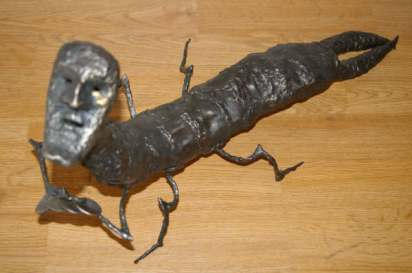
Week 9 Anthropology of Art and Sociology
Pierre Bourdieu’s ‘The Aristocracy of Culture’ from Distinction, argues that art-tastes reflect class-status experience, and says that there is a connection between a person’s social standing and supposed opinions about art. A person’s taste is a product of their position in society. Bourdieu coins the concept of ‘habitus’ as representing pre-determined ideas that we may believe to be objective standards of taste. In fact these ‘tastes’ reflect nothing more than class status and privileged dispositions. He reinforces the social construction of artistic taste by demonstrating that particular groups are in possession of advantageous capital. Below is an image of ivory, presenting as art.Whether it can be considered ‘artistic’ is questionable. Traditionally, the possession of ivory art reflects class position in society. Today it must be undisputed that elephants suffer as we continue to value the status of ivory as art.
Week 10: Anthropology of Art and Ethnography
 Kula ring
Kula ring
The Kula has political and symbolic meaning, and is central to the nature of gift giving, social authority and rites.
This lecture looked at what happens when anthropologists take visual aesthetic systems as their objects of study.
The Kula: New Perspectives on Massim Exchange (1983) by Jerry Leach and Edmund Leach, explores Kula (see above image) – a ring used in a ceremonial exchange in the Milne Bay province of Papua, New Guinea.
Week 11 Anthropology of Art and Anthropology
The work of David Allen was focused on, in particular his work: A Highland Wedding (below). He is noted for painting tartan,well. We discussed the importance of Scotland’s artistic and poetic history.
Trivia: (update, really) – this project received 18/20. Thanks!
